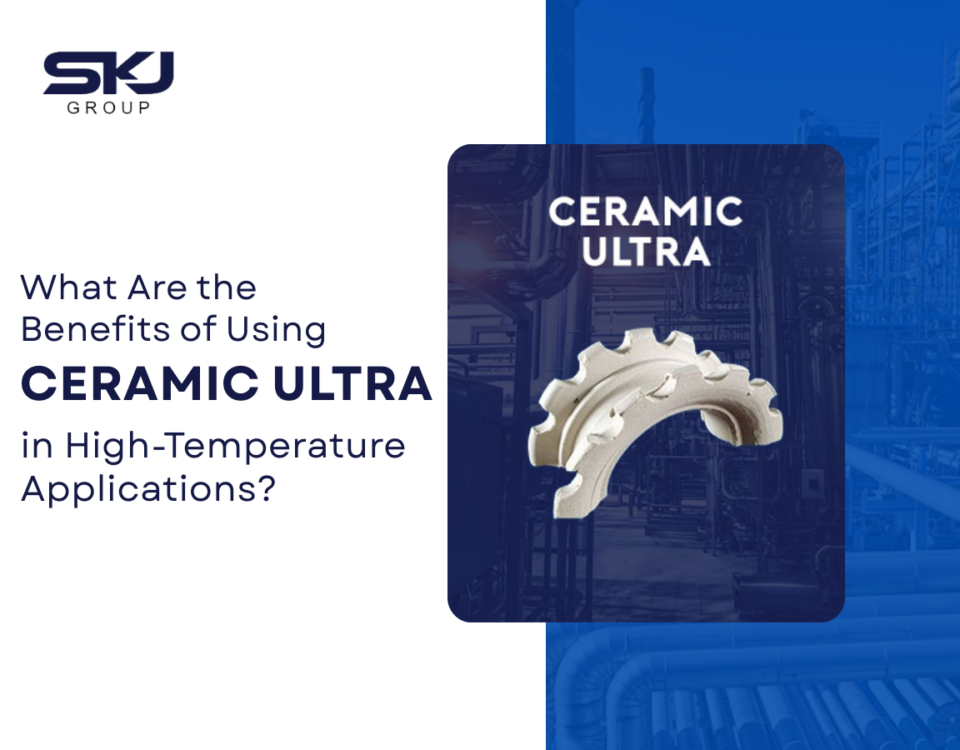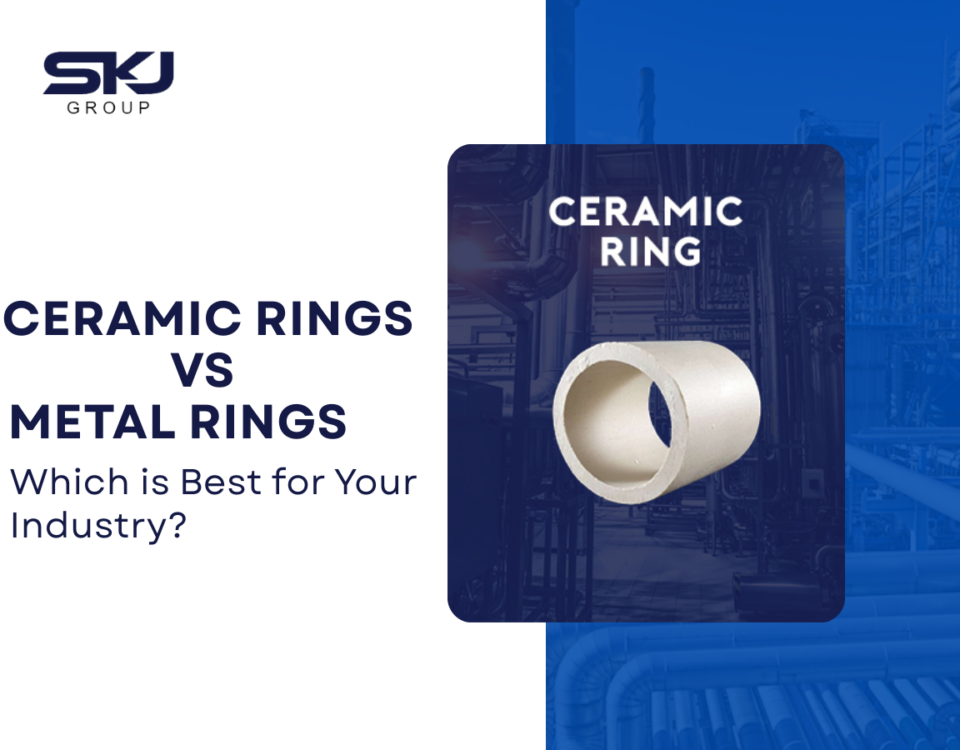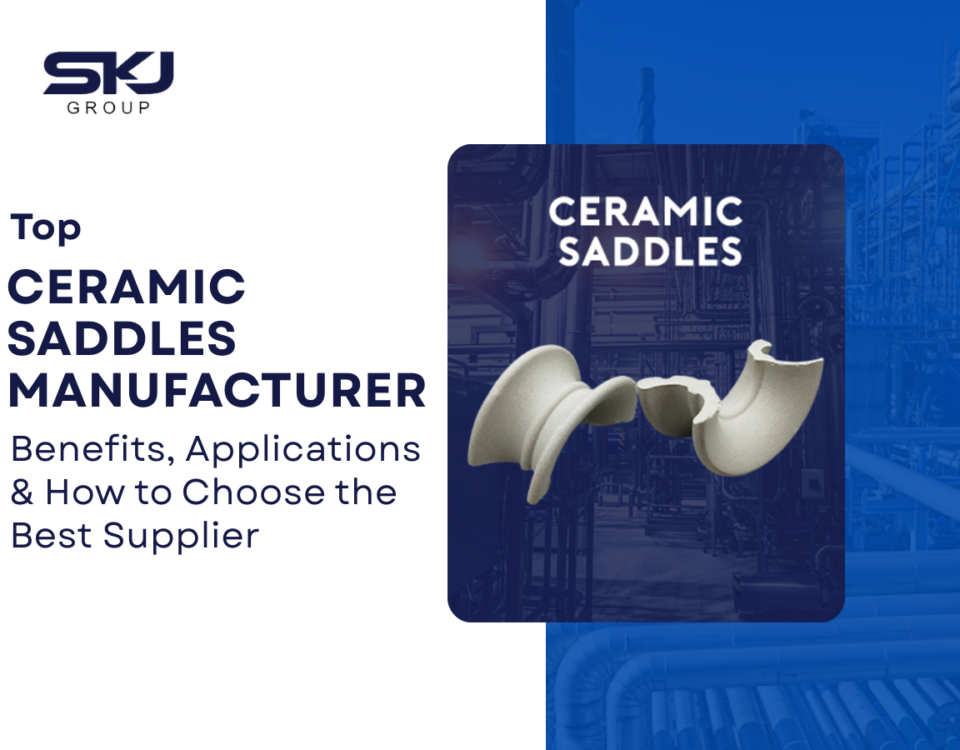Heating Things Up: A Look at Ceramic Heating Element Manufacturers

The Future of Tower Packing: Innovations and Trends in the Industry
August 11, 2024
Common Challenges in Tower Packing Applications and How to Overcome Them
August 15, 2024In the world of industrial heating and thermal management, ceramic heating elements have become indispensable components across various sectors. These advanced materials, produced by specialized ceramic manufacturers, offer unique properties that make them ideal for high-temperature applications. This article explores the fascinating realm of ceramic heating elements, their manufacturing processes, and the key players in this dynamic industry.
The Rise of Ceramic Heating Elements
Ceramic heating elements have gained popularity due to their exceptional heat resistance, durability, and energy efficiency. Unlike traditional metal-based heating elements, ceramics can withstand extreme temperatures without degradation, making them suitable for a wide range of applications, from household appliances to industrial furnaces.
Key advantages of ceramic heating elements include:
1. High-temperature resistance
2. Rapid heating and cooling
3. Uniform heat distribution
4. Chemical inertness
5. Long service life
6. Energy efficiency
These properties have led to the widespread adoption of ceramic heating elements in various industries, including aerospace, automotive, electronics, and manufacturing.
The Manufacturing Process
The production of ceramic heating elements involves a complex series of steps that require expertise in ceramic manufacturing and technical ceramics. Here’s an overview of the typical manufacturing process:
1. Raw Material Selection: Ceramic powder manufacturers supply high-purity powders such as alumina, zirconia, or silicon nitride as the base materials.
2. Mixing and Forming: The ceramic powders are mixed with binders and additives, then shaped into the desired form using techniques like extrusion, pressing, or injection molding.
3. Green Machining: At this stage, ceramic machining companies may perform initial shaping and drilling operations on the unfired ceramic bodies.
4. Sintering: The formed elements are fired in high-temperature kilns to achieve the final ceramic structure and properties.
5. Post-Processing: Ceramic machining near me services may be employed for final dimensioning and surface finishing of the sintered elements.
6. Metallization: Conductive metal layers are applied to create electrical contacts for the heating element.
7. Assembly and Testing: The finished elements are assembled with other components and undergo rigorous quality control tests.
Key Players in the Ceramic Heating Element Industry
Several ceramic manufacturing companies specialize in producing high-quality heating elements. Some notable manufacturers include:
1. AGC Ceramics Co., Ltd.: A leading Japanese company known for its innovative ceramic products, including heating elements.
2. Admatec and Formatec: These companies focus on advanced ceramic manufacturing techniques, including 3D printing of complex ceramic components.
3. Ceramic Drying Systems Ltd: Specializing in ceramic drying equipment, this company plays a crucial role in the heating element manufacturing process.
4. Technical ceramics manufacturers: These companies produce a wide range of advanced ceramic products, including heating elements, for various industrial applications.
5. Ceramic heating element manufacturers: Several companies focus specifically on producing ceramic heating elements for diverse applications.
Materials Used in Ceramic Heating Elements
Various ceramic materials are employed in the production of heating elements, each offering specific advantages:
1. Alumina ceramic manufacturers produce elements known for their high electrical insulation and good thermal conductivity.
2. Zirconia manufacturers create elements with excellent thermal shock resistance and mechanical strength.
3. Silicon nitride manufacturers offer elements with superior thermal shock resistance and low thermal expansion.
4. Aluminum nitride manufacturers produce elements with high thermal conductivity and excellent electrical insulation.
Other ceramic materials used in heating element production include:
– Boron carbide
– Ceramic powder
These materials are often combined or used in specific applications to achieve optimal heating performance.
Applications of Ceramic Heating Elements
Ceramic heating elements find applications across a wide range of industries and products:
1. Home Appliances: Ceramic elements are used in hair dryers, space heaters, and cooking appliances.
2. Industrial Processes: High-temperature furnaces, kilns, and heat treatment equipment rely on ceramic heating elements.
3. Automotive Industry: Ceramic heaters are used in diesel engine glow plugs and catalytic converters.
4. Aerospace: Aircraft de-icing systems and sensor heating utilize ceramic elements.
5. Semiconductor Manufacturing: Wafer processing equipment often incorporates ceramic heating elements.
6. Medical Devices: Sterilization equipment and analytical instruments benefit from ceramic heating technology.
Advancements in Ceramic Heating Element Technology
The field of ceramic heating elements is constantly evolving, with manufacturers and researchers pushing the boundaries of performance and efficiency. Some recent advancements include:
1. Nanostructured Ceramics: Utilizing nanotechnology to create heating elements with enhanced thermal properties and faster response times.
2. Multi-layer Elements: Combining different ceramic materials to achieve optimal heating characteristics for specific applications.
3. Smart Heating Systems: Incorporating sensors and control systems for precise temperature management and energy efficiency.
4. Additive Manufacturing: Exploring 3D printing techniques to create complex ceramic heating element geometries.
The Role of Specialized Ceramic Machining
The production of high-quality ceramic heating elements often requires precise ceramic machining to achieve the desired shapes, sizes, and surface finishes. Ceramic machining companies play a crucial role in this process, offering services such as:
1. Grinding and polishing of element surfaces
2. Cutting and shaping of ceramic components
3. Drilling and creating channels for electrical connections
4. Precision finishing for optimal heat distribution
For companies seeking ceramic machining near me, it’s essential to partner with experienced providers who understand the unique challenges of working with advanced ceramic materials.
Specialized Ceramic Products for Heating Applications
In addition to heating elements, ceramic manufacturers produce a wide range of related products for thermal management applications:
– Ceramic tube manufacturers create tubular heaters for various industrial processes.
– Ceramic plate manufacturers produce flat heating elements for specific applications.
– Ceramic substrate manufacturers develop substrates for electronic heating systems.
– Ceramic liners manufacturers offer protective linings for high-temperature equipment.
– Ceramic ball manufacturers produce media for certain types of heat exchange systems.
– Ceramic ferrule manufacturers create components for sealing and insulating heating assemblies.
These specialized products demonstrate the versatility of ceramics in heating applications across various industries.
Challenges and Future Outlook
Despite the numerous advantages of ceramic heating elements, the industry faces several challenges:
1. High production costs: The complex manufacturing process and specialized materials contribute to relatively high production costs.
2. Competition from alternative materials: Metal-based heating elements and emerging technologies pose competition in certain applications.
3. Customization requirements: Different heating applications often require tailored solutions, challenging manufacturers to maintain flexibility in their production.
4. Environmental concerns: The energy-intensive nature of ceramic production has led to increased focus on developing more sustainable manufacturing processes.
Looking ahead, the ceramic heating element industry is poised for continued growth and innovation. As manufacturers of ceramic components and technical ceramics companies invest in research and development, we can expect to see:
1. Improved element designs that offer higher efficiency and faster heating rates.
2. Integration of digital technologies for smart heating control and energy management.
3. Development of new ceramic materials with enhanced thermal properties.
4. Expansion into new markets and applications beyond traditional heating systems.
The Growing Importance of Ceramic Matrix Composites
As the demand for high-performance materials increases, ceramic matrix composite manufacturing is gaining traction in the heating element industry. These advanced materials combine the heat resistance of ceramics with the toughness of reinforcing fibers, offering:
1. Improved thermal shock resistance
2. Higher mechanical strength
3. Enhanced durability in extreme environments
Ceramic matrix composites manufacturing techniques are evolving rapidly, opening up new possibilities for heating element design and performance.
Frequently Asked Questions (FAQs)
1. Q: What makes ceramic heating elements superior to traditional metal elements?
A: Ceramic heating elements offer higher temperature resistance, faster heating rates, and longer service life compared to metal elements. At SKJ Group, we specialize in producing ceramic elements that outperform traditional options.
2. Q: Can ceramic heating elements be customized for specific applications?
A: Yes, ceramic heating elements can be tailored to meet specific requirements. SKJ Group offers customized heating solutions based on factors such as temperature range, power density, and environmental conditions.
3. Q: How long do ceramic heating elements typically last?
A: The lifespan of ceramic heating elements depends on various factors, including operating temperature and cycling frequency. SKJ Group’s high-quality elements are designed for optimal durability and can last several years under proper operating conditions.
4. Q: Are ceramic heating elements energy-efficient?
A: Yes, ceramic heating elements are generally more energy-efficient than metal elements due to their ability to reach higher temperatures quickly and maintain heat effectively. SKJ Group focuses on developing energy-efficient heating solutions for our customers.
5. Q: Can ceramic heating elements be repaired if damaged?
A: In most cases, damaged ceramic heating elements need to be replaced rather than repaired. However, SKJ Group offers consultation services to help extend the life of your heating systems and minimize downtime.
Conclusion: Embracing the Future of Ceramic Heating Technology
As industries continue to demand more efficient, durable, and high-performance heating solutions, ceramic heating elements stand at the forefront of thermal management technology. These advanced ceramic components play a crucial role in ensuring optimal performance across a wide range of applications, from household appliances to cutting-edge industrial processes.
SKJ Group is proud to be a leader in this exciting field, offering state-of-the-art ceramic heating element solutions that meet the evolving needs of various industries. With our commitment to innovation, quality, and customer satisfaction, we are poised to shape the future of ceramic heating technology.
Whether you’re looking for standard ceramic heating elements or require customized solutions for your specific application, SKJ Group has the expertise and capabilities to meet your needs. Our team of skilled engineers and technicians works tirelessly to develop and produce ceramic heating elements that set new standards in performance, efficiency, and reliability.
Don’t let outdated heating technology hold back your processes or products. Partner with SKJ Group today and experience the difference that advanced ceramic heating elements can make in your operations. Contact us now to learn more about our products and services, and take the first step towards optimizing your heating systems with cutting-edge ceramic technology.




